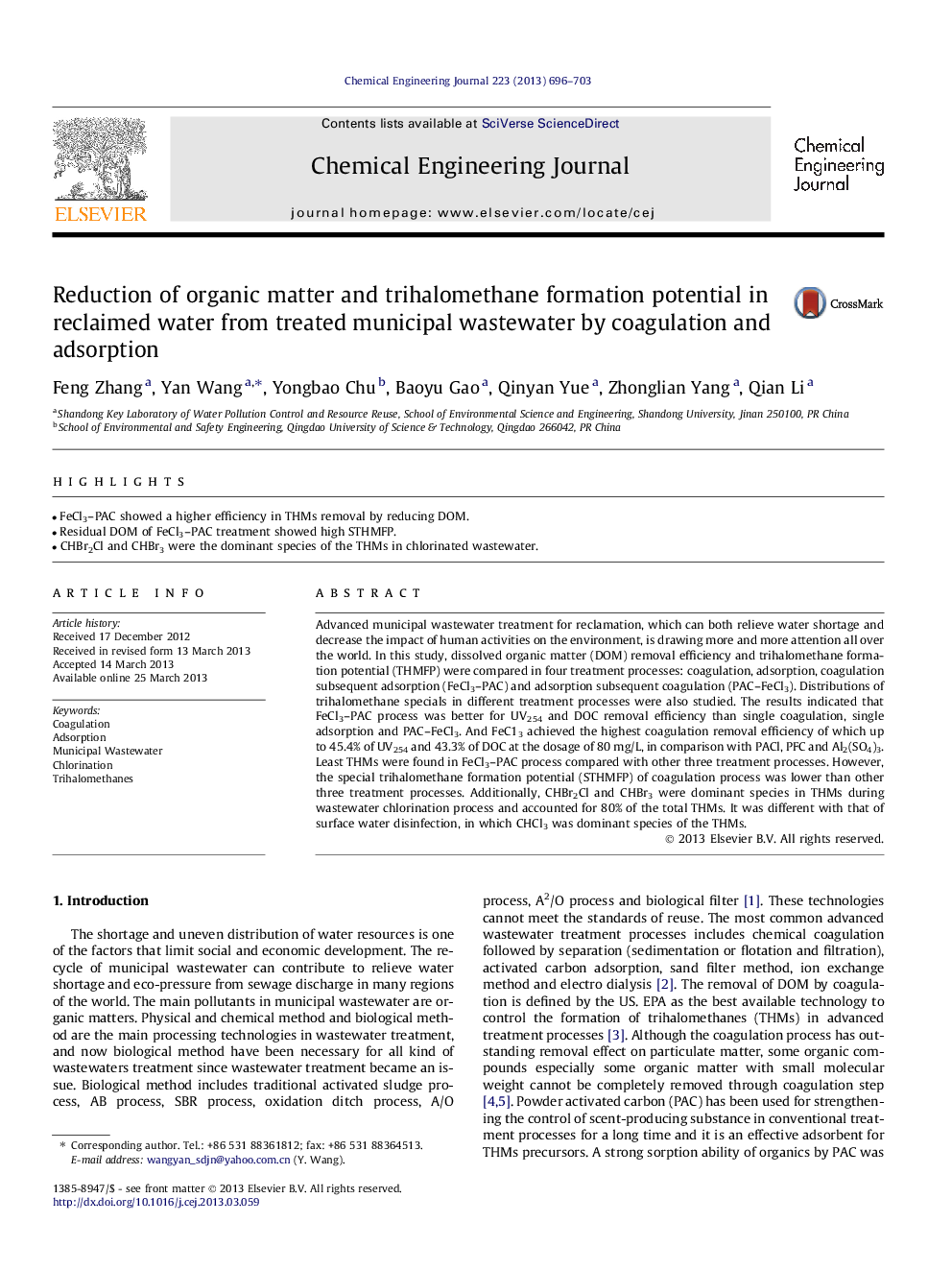| Article ID | Journal | Published Year | Pages | File Type |
|---|---|---|---|---|
| 6588049 | Chemical Engineering Journal | 2013 | 8 Pages |
Abstract
Advanced municipal wastewater treatment for reclamation, which can both relieve water shortage and decrease the impact of human activities on the environment, is drawing more and more attention all over the world. In this study, dissolved organic matter (DOM) removal efficiency and trihalomethane formation potential (THMFP) were compared in four treatment processes: coagulation, adsorption, coagulation subsequent adsorption (FeCl3-PAC) and adsorption subsequent coagulation (PAC-FeCl3). Distributions of trihalomethane specials in different treatment processes were also studied. The results indicated that FeCl3-PAC process was better for UV254 and DOC removal efficiency than single coagulation, single adsorption and PAC-FeCl3. And FeC13 achieved the highest coagulation removal efficiency of which up to 45.4% of UV254 and 43.3% of DOC at the dosage of 80Â mg/L, in comparison with PACl, PFC and Al2(SO4)3. Least THMs were found in FeCl3-PAC process compared with other three treatment processes. However, the special trihalomethane formation potential (STHMFP) of coagulation process was lower than other three treatment processes. Additionally, CHBr2Cl and CHBr3 were dominant species in THMs during wastewater chlorination process and accounted for 80% of the total THMs. It was different with that of surface water disinfection, in which CHCl3 was dominant species of the THMs.
Related Topics
Physical Sciences and Engineering
Chemical Engineering
Chemical Engineering (General)
Authors
Feng Zhang, Yan Wang, Yongbao Chu, Baoyu Gao, Qinyan Yue, Zhonglian Yang, Qian Li,
